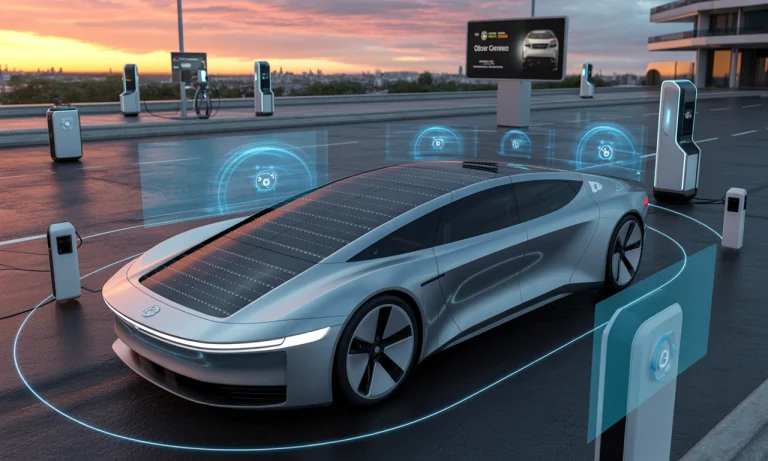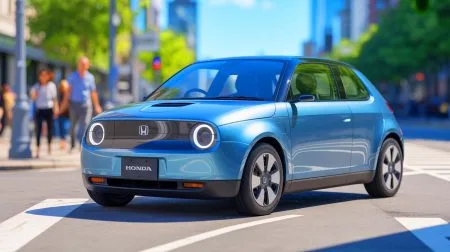Technological innovation is rewriting the script of the automotive world, injecting new life into vehicles that not long ago seemed bound by yesterday’s engineering. The fierce rivalry between Tesla, Rivian, and Lucid Motors, the relentless experimentation by industry titans such as Ford and General Motors, and the audacious ambitions of new players like NIO and Hyundai—these are not just headlines, but signposts of rapid transformation. Features imagined in concept vehicles are now commonplace, even in entry-level cars. From electrification to self-driving advancements, the boundaries between science fiction and reality are dissolving. Veterans remember when luxury was measured by power windows; now, advanced driver-assistance systems and AI-driven personalization set the bar for every automaker. As you step into a dealership, you’re not only investing in a vehicle, but in a slice of tomorrow’s technology. The coming years hold promises of sustainability, connectivity, and truly intelligent machines—ushering in a future few could have pictured a decade ago.
Electric Vehicles Surge: How EVs Are Re-Defining Transportation
Time and again, the passage from experimental innovation to industry standard begins with electric mobility. Tesla’s relentless push toward accessible long-range electric vehicles, echoed by Rivian’s adventurous spirit and Ford’s all-in embrace with its F-series Lightning, signals an age where EVs dominate both buzz and the road. Meanwhile, Lucid Motors turns heads with luxurious design and ultrafast fast-charging, while BYD and Hyundai make mainstream EV ownership less a gamble, more an everyday choice. Beyond range improvements and cost reductions, the true shift comes in how fast-charging infrastructures and solid-state battery breakthroughs are changing daily commutes and cross-country journeys. As those living in urban centers observe, city charging networks are sprouting as quickly as the cars themselves, providing newfound flexibility whether drivers need a quick top-up or a full charge overnight.
| Brand | Model Line | Battery Tech | Estimated Range (mi) |
|---|---|---|---|
| Tesla | Model S Plaid | Lithium-ion/Solid-state prototype | 400+ |
| Rivian | R1T/R1S | Lithium-NMC | 314-400 |
| Lucid Motors | Air | Lithium-ion/Next-gen | 500+ |
| Hyundai | Ioniq 6 | Lithium-polymer | 361 |
| BMW | iX/i4 | Lithium-ion | 300+ |
For a deep dive into how battery technology shapes the new era, battery innovations explained here paint the landscape of current breakthroughs and their long-term impact.
Autonomous Vehicles and the Race for Level 4 Automation
Across research labs and tech hubs, minds at Waymo, Tesla, and NIO are coding the blueprint for autonomy. While Waymo’s minivans patrol select urban streets, and Tesla’s beta Full Self-Driving navigates sprawling suburban highways, the gap is narrowing between theoretical capability and widespread everyday use. Public demonstrations in California—vehicles safely navigating heavy traffic with minimal intervention—testify to rapid progress. Still, challenge meets innovation at every corner: regulatory puzzles, sensor integration, and trust-building with the public remain major hurdles.
Once a futuristic promise, autonomous mobility is now steadily taking shape as a practical, scalable solution. Waymo’s ride-hailing fleets offer early glimpses of a world in which the traffic jams, missed exits, and human error become tales of a different era. Enthusiasts tracking milestones can follow the evolution of these systems in dedicated reviews, such as those at this resource on automation progress.
The Rise of Advanced Driver-Assistance Systems
Long before fully self-driving cars rule the streets, Advanced Driver-Assistance Systems (ADAS) are paving the way. From adaptive cruise control in Volvo’s family SUVs to Ford’s BlueCruise and BMW’s advanced lane-keeping, these systems push the envelope of both comfort and safety. Inspired by motorsport and luxury experiments of decades past, mainstream cars now feature lane monitoring, collision detection, and even predictive maintenance as standard. Tesla’s rapid over-the-air upgrades keep refining its Autopilot and safety features, demonstrating how software innovation powers mechanical reliability. The story of ADAS is not just technological, but democratizing—what once felt exclusive now belongs to all who sit behind the wheel.
| Automaker | Key ADAS Feature | Real-World Example |
|---|---|---|
| Tesla | Autopilot/Full Self-Driving Beta | Driver-assistance on highways, regular OTA updates |
| Ford | BlueCruise | Hands-free driving on mapped highways |
| BMW | Steering and Lane Control Assistant | Maintains lane position, handles congestion |
| Volvo | Pilot Assist | Adaptive cruise + lane centering |
Connectivity Beyond Commuting: V2X and AI-Powered Features
Connectivity is no longer limited to a phone pairing with a dash screen; it’s about vehicles communicating with each other, the city, and even infrastructural elements. In cities dotted with 5G towers, Hyundai and General Motors lead in deploying Vehicle-to-Everything (V2X) technology—cars receive live updates about hazards, reroute in real-time, and sync with traffic lights for optimized flow. Murmurs of AI-driven personalization, meanwhile, are turning every drive into a custom-tailored experience. The in-car environment learns preferences—seat position, climate, entertainment, and navigation—making life behind the wheel seamless. BMW and Volvo, with intelligent assistants and proactive safety features, exemplify this integration. Get the basics of connected technology and see how it transforms the driving journey.
Shared Mobility and the New Model of Car Ownership
Car ownership, an American rite of passage, is evolving. As urban populations swell and priorities shift, shared mobility platforms like those piloted by Uber, NIO, and even Waymo’s autonomous shuttles offer affordable, accessible alternatives to the personal car. Rather than a mark of status, a car becomes, for many, another service—a space occupied for a journey, then relinquished. These shifting tides force automakers to rethink design, infrastructure, and even marketing. Insights into engine design for urban and shared mobility reveal the hidden engineering beneath this new ownership landscape. As more city dwellers tap into app-based mobility and subscription platforms, vehicles themselves subtly adapt: modular interiors, flexible seating, resilient materials primed for round-the-clock use.
The Green Revolution: Circular Manufacturing & Clean Energy
Manufacturing is undergoing its own revolution under the weight of sustainability pledges. In assembly plants stretching from Detroit to Shanghai, recycled plastics, bio-based leathers, and waste-free processes are settling in as the new normal. BMW’s and Volvo’s factories hum with the sounds of circular economies—every scrap repurposed, every blueprint optimized for minimal environmental footprint. Hydrogen fuel cells, advanced by Hyundai and Toyota, add another layer: emission-free trucking and haulage, where battery electric solutions struggle. Innovations in energy management and alternate fuels hint at a world where carbon reduction is standard operating procedure, not an afterthought.
| Material/Technology | Automaker Leading Adoption | Impact |
|---|---|---|
| Recycled plastics | BMW, Volvo | Reduced manufacturing emissions |
| Hydrogen FCEV | Hyundai, Toyota | Emission-free long-haul solutions |
| OTA software updates | Tesla, Ford | Long-term vehicle performance |
Smart Systems: Hydraulics, Suspension, and Braking Innovation
For decades, the interplay of power and control defined automotive engineering. Today, hydraulic systems—once hidden in race cars—permeate daily drivers, with adaptive suspensions and brake-by-wire systems fine-tuning ride and handling for every road and weather condition. Mercedes-Benz’s innovation in active suspension, coupled with the agility found in Porsche’s dynamic aerodynamics, demonstrates how quick-responding, high-power density components shape precision driving. Domin’s four-corner control and high-speed servo valves blur the line between luxury comfort and racecar feedback. BYD’s proficiency with hydraulic advancements continues to impress in the EV segment. These unsung technologies support the everyday driver, making rides smoother and safety a tangible, mechanical guarantee. To better understand how they expand possibilities in vehicle architecture, check out the deep technical features at this comprehensive guide.
Future Visions: Flying Cars and Limitless Design
Beyond the highway, innovators from Joby Aviation to experimental arms in Detroit are clearing the runway for vehicles that hover and soar. eVTOL prototypes, blending automotive engineering with aerospace technology, hint at an age in which city commutes might leap skyward. In parallel, the integration of quantum computing, nanomaterials, and AI-driven manufacturing signal a boundless future—where imagination, supported by software and smart machines, is the only design limit. For those curious about what it takes to move vehicle concepts from drawing board to street, a series of explorations at leftlanenews.com opens the door to the behind-the-scenes world of innovation and prototyping.
FAQ
How has over-the-air (OTA) updating changed vehicle maintenance?
Manufacturers like Tesla and Ford use OTA updates to deliver software improvements, bug fixes, and even new features directly to cars. This reduces the need for dealership visits and allows owners to enjoy continuous enhancements year-round. Explore recent OTA advances at leftlanenews.com.
Are hydrogen fuel cell vehicles a real alternative to battery electrics?
Hydrogen FCEVs, led by Hyundai and Toyota, offer quick refueling and zero tailpipe emissions, particularly for commercial and long-range transport. Their infrastructure is less developed than battery EVs but growing steadily. Read about how fuel cells fit into the energy mix here.
What role will shared mobility play for city residents in coming years?
Shared mobility, powered by platforms like NIO, Waymo, and Uber, is set to grow as car ownership declines in dense regions. These services offer flexibility, cost savings, and environmental benefits, while prompting OEMs to rethink interior and mechanical design for high-usage scenarios. Details on future engine needs for urban use can be found here.
Is ADAS now common in all new cars?
Core ADAS features—such as adaptive cruise, lane keeping, and emergency braking—are becoming standard across even modest vehicles, thanks to regulatory pushes and cost reductions. From BMW and Ford to Volvo, these safety technologies are now baseline, not upgrades.
What’s the next material breakthrough expected in car manufacturing?
The transition to bio-based materials, 3D-printed metal components, and recycled composites is accelerating. Leaders like BMW and Volvo are showing that circular manufacturing and sustainability can match, or even surpass, traditional methods in quality and cost. Learn more about material science leaps here.
Did you like it? 4.6/5 (25)







